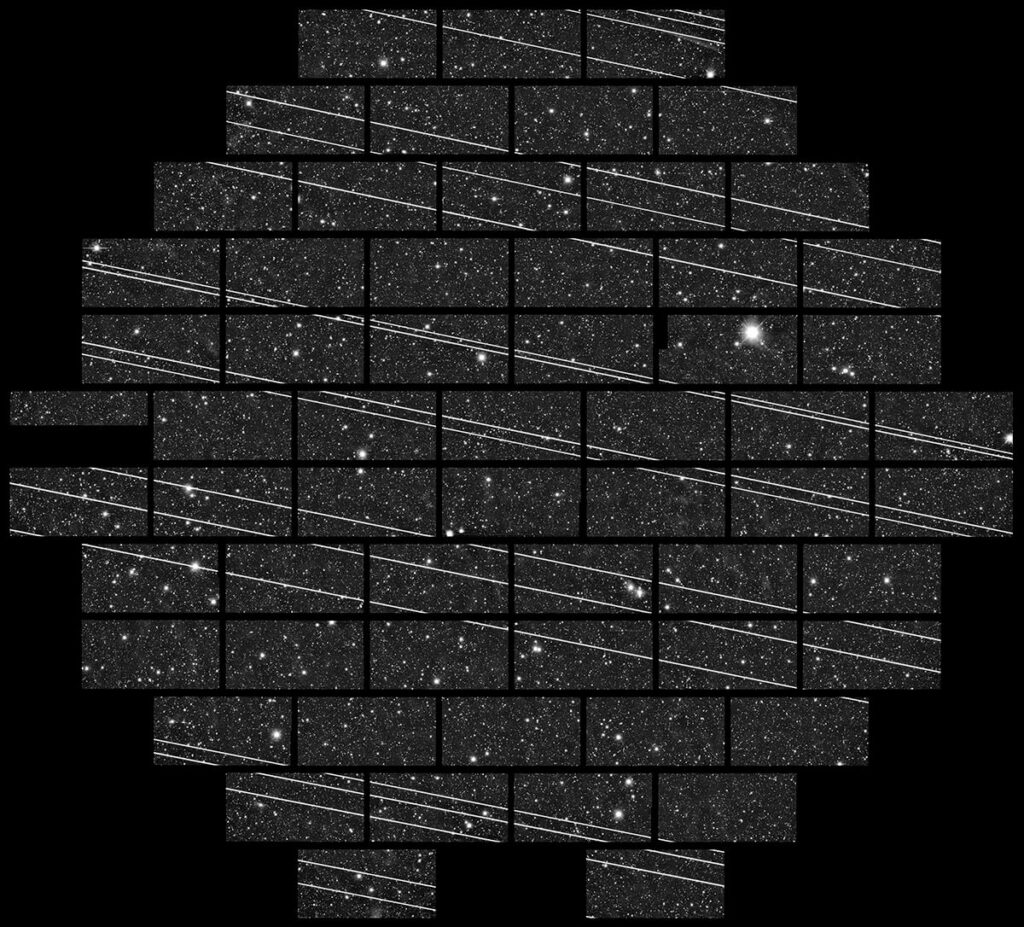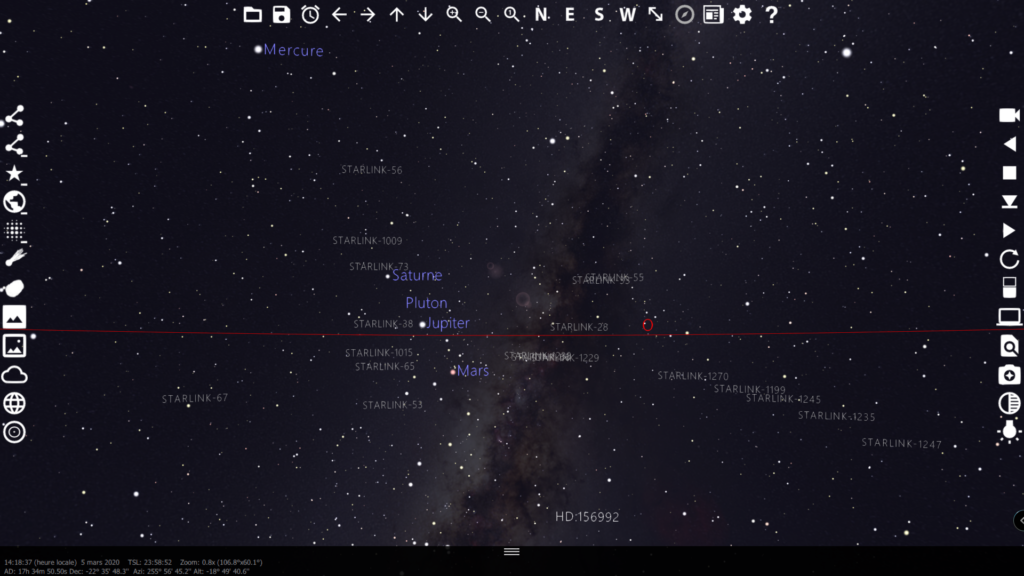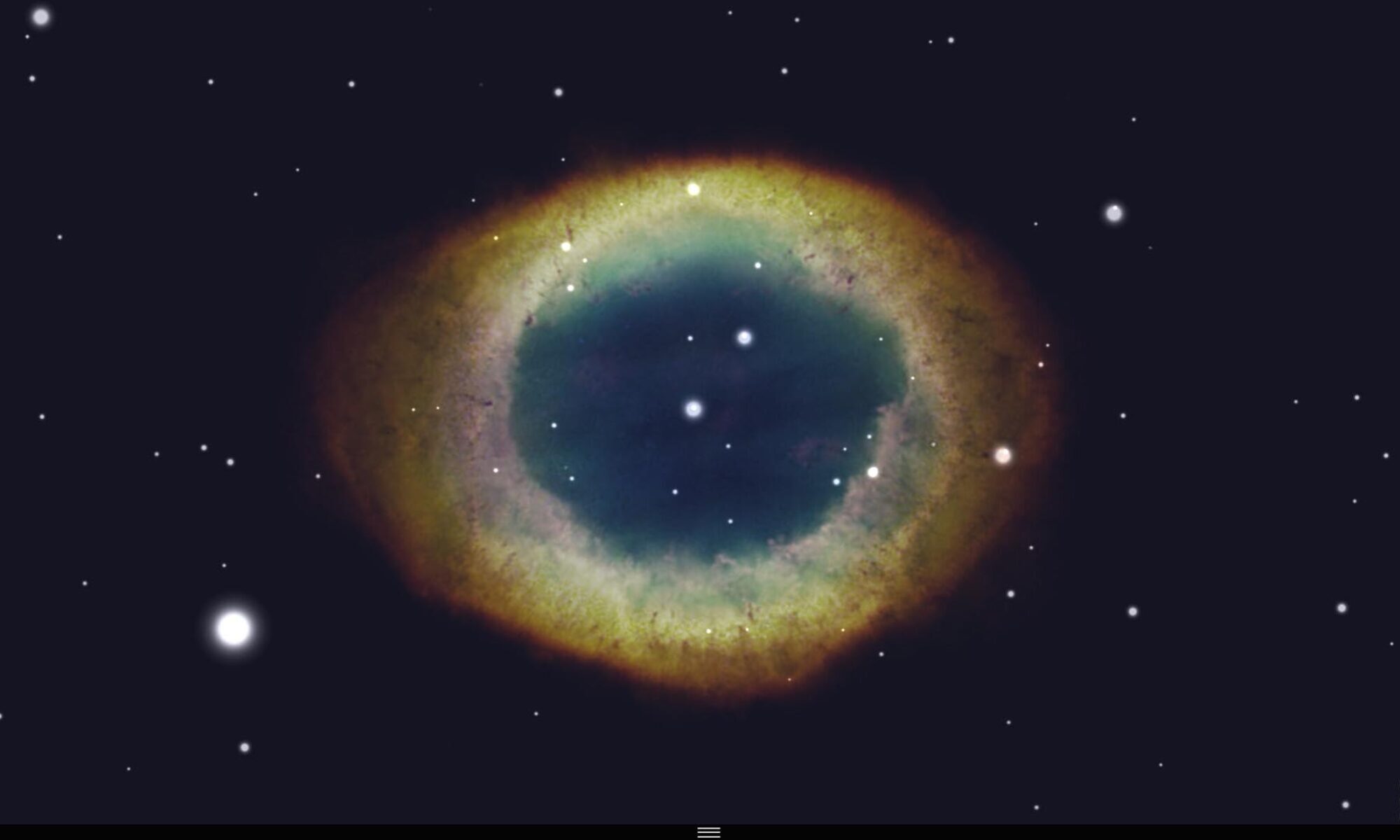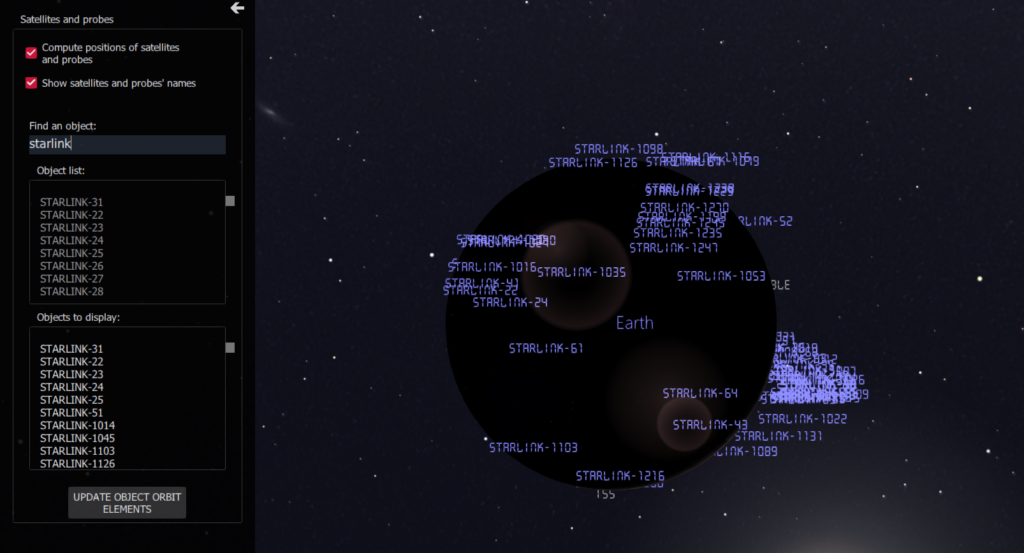Starlink is a project by the American company SpaceX, which aims to provide high-speed Internet connection across the globe through a myriad of specially designed satellites.
To reduce latency, these small satellites, weighing less than 260 kg, are placed in low Earth orbit at just a few hundred kilometers in altitude. At term, this constellation will consist of more than 42,000 satellites!
This project is a disaster for astronomers who fear that their measurements will be seriously affected by the increasing number of these intruders. This pollution will not only impact deep-sky photography but could also harm radio telescopes that observe the sky in other regions of the electromagnetic spectrum. The frustration grows as professional and amateur astronomers begin to notice the initial effects of these constant passes in the field of view of their instruments.

However, Elon Musk’s company is not the only one seeking to exploit low Earth orbits. OneWeb and Amazon are already developing competing projects that, in a few years, will fill the sky with hundreds of thousands of bright points impossible to remove.
This will result in a radical transformation of the sky as we know it, making astrophysics research impossible from Earth. This natural heritage, accessible to everyone and already severely damaged by chaotic suburban lighting, will disappear forever.
Unfortunately, it seems difficult to fight against these multinationals that decide with impunity to deprive humanity of this common good. Every month, they obtain authorization to launch new satellites from organizations such as the International Telecommunication Union or the Federal Communications Commission, taking advantage of the current legal vacuum and outdated rules caused by this space race. Moreover, these mega-constellations of satellites significantly increase the risk of collisions and could saturate near-Earth space with debris of all kinds.
Astronomers are left with no choice but to protest and can only try to alert public opinion and governments to the dangers of these uncontrollable projects.
To see the extent of the damage, the latest version of WinStars displays the real-time position of the Starlink constellation satellites.
Simply go to the “Objects” field in the “Solar System/Satellites” menu and select, one by one, all satellites whose names begin with Starlink.






